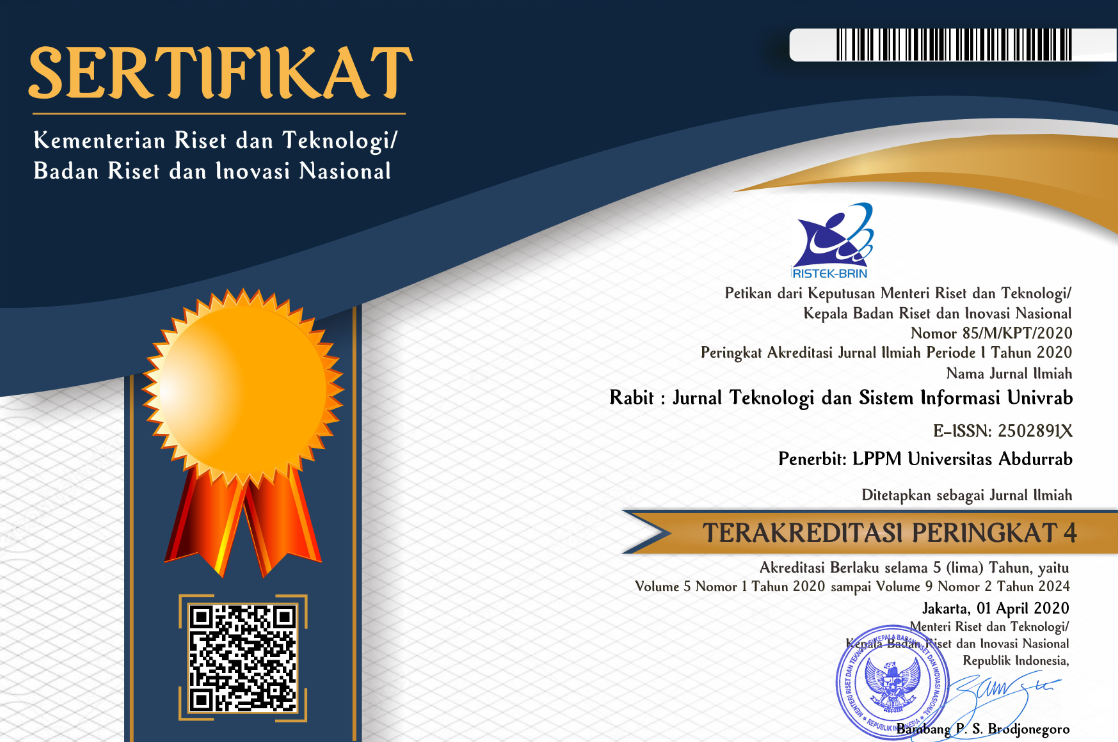PENERAPAN METODE ROTOSCOPING DAN FRAME ELIMINATION PADA ANIMASI 2D TARI ZAPIN
Abstract
The growth of the animation industry in Indonesia is predicted to continue to grow. This can be seen from the development of animation in Indonesia, which is dominated by 2-dimensional and 3-dimensional animation in recent years, as well as being marked by the large number of animators from Indonesia who are successful on the international stage. Generally, animation is applied to character movements, whether simple movements such as walking, to complex movements such as fighting. In its application, various methods can be used as long as they can create animated movements that match the original movements. Generally this is done successfully because in complex movements, the speed of the movement seems to obscure the animation details of the movement. However, this does not apply to one type of movement that is very rarely used in animation, this movement is dancing. The reason why dance movements are rarely animated is because dance is a series of movements that have low speed, so that the details in each change in movement in one dance can produce hundreds or even thousands of frames when converted into animation. Visualizing dance art with animated visuals is not an easy thing, because there are many frames that have to be created so that the dance looks natural. Moreover, using animation techniques such as frame by frame and cutout, of course, actually increases the processing time and quantity of images produced. Actually, apart from frame by frame and cutout, there are still other animation techniques that can be applied to overcome the problem of many frames in dance movements. One solution is to visualize dance in animated form. Namely the rotoscoping technique which can bridge dance with animation. This rotoscoping imitates every change in movement in dance, and converts it into a frame. However, if you only use this technique, the resulting image will still be too large, so one more technique needs to be added, namely frame elimination. For this reason, the author wants to apply the rotoscoping technique in making Zapin dance animations. To find out whether dance art can be visualized well using rotoscoping and Frame Elimination techniques.
Downloads
References
Kemenparekraf. 2024. “Perkembangan Industri Animasi Di Indonesia Berpotensi Tembus Pasar Global.” Kemenparekraf. 2024. https://kemenparekraf.go.id/ragam-ekonomi-kreatif/perkembangan-industri-animasi-di-indonesia-berpotensi-tembus-pasar-global
Siswati Endah Damayanti. (2020). “Animasi 2D & 3D.” PT Kuantum Buku Sejahtera
Munib, et.all., (2022). Development of 2D Animation Learning Media Akhlakul Karimah Materials (Ukhuwah and Husnudzon), Jurnal Edukasi UNNES, 134-
HTTPS://UNITY.COM/TOPICS/WHAT-IS-2D-ANIMATION, Diakses Juni 2024.
Kumala Hadi, et.all., (2021). Perancangan Animasi 3D “Remember” dengan Metode Pose to Pose, Jurnal Nuansa Informatika, 14-20.
Ahmed, I., & Janghel, S. (2015). 3D Animation: Don’t Drink and Drive, International Journal of u-and e Service, Science and Technology, 415-426.
Atan, et.all., (2020). Perancangan Game Berbasis Android Untuk Memperkenalkan Adat Melayu Riau, Jurnal Teknologi dan Sistem Informasi Univrab, Vol 5 No.1, 54-66.
Samsudin, et.all., (2022). Media Pembelajaran Bahasa IMAI (Indonesia, Mandarin, Arab, dan Inggris) Berbasis Multimedia, Jurnal Teknologi dan Sistem Informasi Univrab, Vol 7 No.1, 64-70.
Syahputra Bayu, et.all., (2024). Perancangan Animasi 2D Mengenai Menstruasi Untuk Remaja Putri dengan Metode MDLC, Jurnal Teknologi dan Sistem Informasi Univrab, Vol 9 No.1,15-28.
Binanto I., (2010). “Multimedia Digital.- Dasar teori dan Pengembangannya” Andi Offset, Yogyakarta.
Bendazzi, Giannalberto. (2018) "Quirino Cristiani, The Untold Story of Argentina's Pioneer Animator". Animation World Network.
Frank. H,. (2019) "Fram by Frame – A Materialist Aesthetics of Animated Cartoons". Ahmanson Murphy Imprint in Fine Arts.
Asmarani, Ratih (2020) "Pendidikan Seni Tari". LPPM UNHASY TEBUIRENG JOMBANG.
Lupiansyah, Ferzi, et all. (2018), Buku Ilustrasi Pengenalan Sejarah kesenian Zapin Untuk Anak Sekolah Dasar di Kepulauan Riau ,Jurnal Rekamakna Institut Teknologi Nasional.
EYR Pratiwi, R Asmarani., (2024). Kualitas Media Card Dance Untuk Pembelajaran Seni Tari di Lembaga Pendidikan, Jurnal Bidang Pendidikan Dasar 2,1-10.
Copyright (c) 2024 Rabit : Jurnal Teknologi dan Sistem Informasi Univrab

This work is licensed under a Creative Commons Attribution-NonCommercial-ShareAlike 4.0 International License.
Copyright Notice
The copyright of the received article shall be assigned to the publisher of the journal. The intended copyright includes the right to publish the article in various forms (including reprints). The journal maintains the publishing rights to published articles. Therefore, the author must submit a statement of the Copyright Transfer Agreement.*)
This work is licensed under a Creative Commons Attribution-NonCommercial-ShareAlike 4.0 International License.
In line with the license, authors and any users (readers and other researchers) are allowed to share and adapt the material only for non-commercial purposes. In addition, the material must be given appropriate credit, provided with a link to the license, and indicated if changes were made. If authors remix, transform or build upon the material, authors must distribute their contributions under the same license as the original.
Please find the rights and licenses in RABIT : Jurnal Teknologi dan Sistem Informasi Univrab. By submitting the article/manuscript of the article, the author(s) accept this policy.
1. License
The non-commercial use of the article will be governed by the Creative Commons Attribution license as currently displayed on Creative Commons Attribution-NonCommercial-ShareAlike 4.0 International License.
2. Author’s Warranties
The author warrants that the article is original, written by stated author(s), has not been published before, contains no unlawful statements, does not infringe the rights of others, is subject to copyright that is vested exclusively in the author and free of any third party rights, and that any necessary written permissions to quote from other sources have been obtained by the author(s).
3. User Rights
RABIT's spirit is to disseminate articles published are as free as possible. Under the Creative Commons license, RABIT permits users to copy, distribute, display, and perform the work for non-commercial purposes only. Users will also need to attribute authors and RABIT on distributing works in the journal.
4. Rights of Authors
Authors retain all their rights to the published works, such as (but not limited to) the following rights;
- Copyright and other proprietary rights relating to the article, such as patent rights,
- The right to use the substance of the article in own future works, including lectures and books,
- The right to reproduce the article for own purposes,
- The right to self-archive the article,
- The right to enter into separate, additional contractual arrangements for the non-exclusive distribution of the article's published version (e.g., post it to an institutional repository or publish it in a book), with an acknowledgment of its initial publication in this journal (RABIT : Jurnal Teknologi dan Sistem Informasi Univrab).
5. Co-Authorship
If the article was jointly prepared by other authors, any authors submitting the manuscript warrants that he/she has been authorized by all co-authors to be agreed on this copyright and license notice (agreement) on their behalf, and agrees to inform his/her co-authors of the terms of this policy. RABIT will not be held liable for anything that may arise due to the author(s) internal dispute. RABIT will only communicate with the corresponding author.
6. Royalties
This agreement entitles the author to no royalties or other fees. To such extent as legally permissible, the author waives his or her right to collect royalties relative to the article in respect of any use of the article by RABIT.
7. Miscellaneous
RABIT will publish the article (or have it published) in the journal if the article’s editorial process is successfully completed. RABIT's editors may modify the article to a style of punctuation, spelling, capitalization, referencing and usage that deems appropriate. The author acknowledges that the article may be published so that it will be publicly accessible and such access will be free of charge for the readers as mentioned in point 3.
 PDF (Bahasa Indonesia)
PDF (Bahasa Indonesia)
 Abstract views: 14
Abstract views: 14
 downloads: 8
downloads: 8

 :
:












